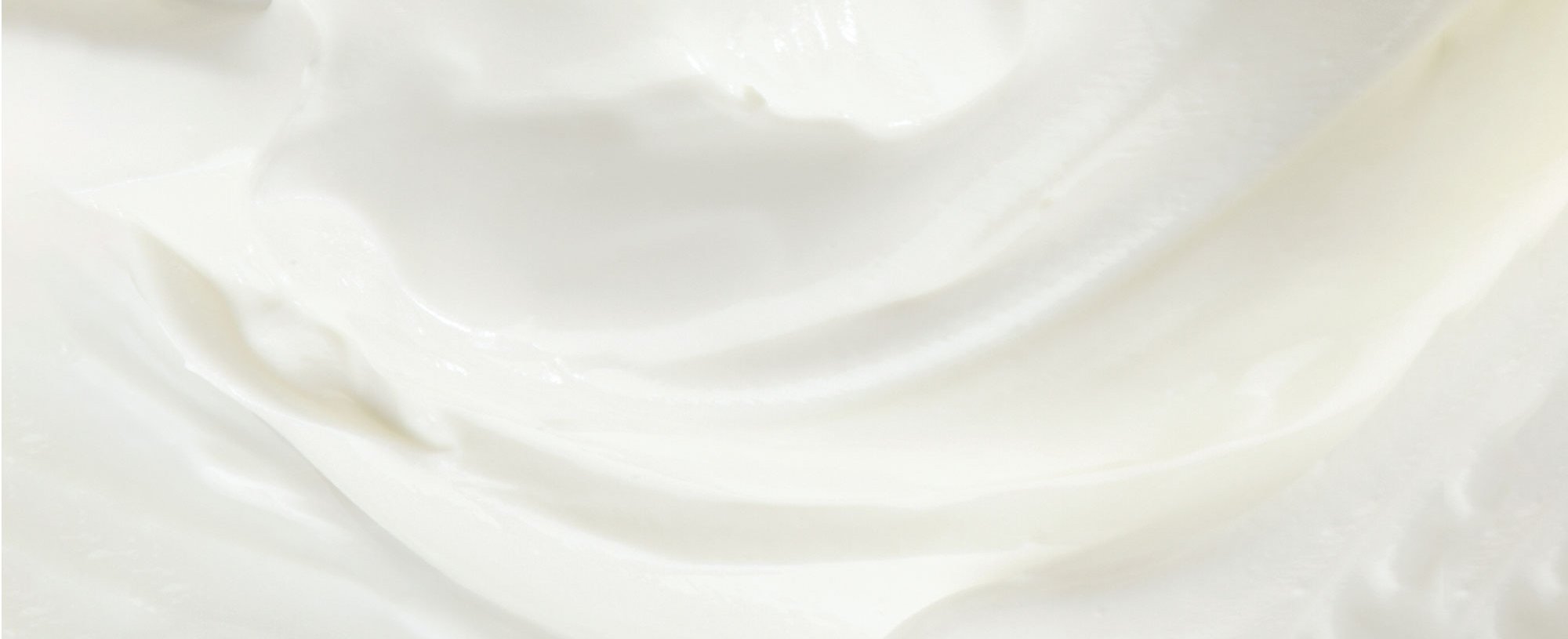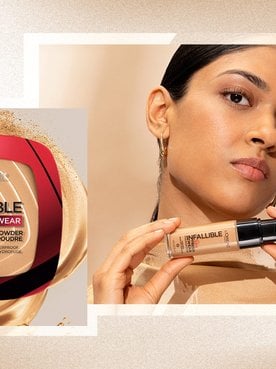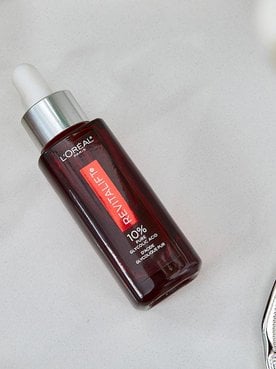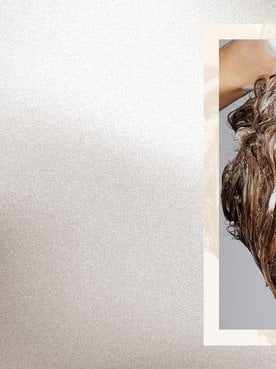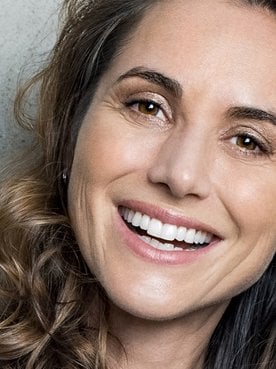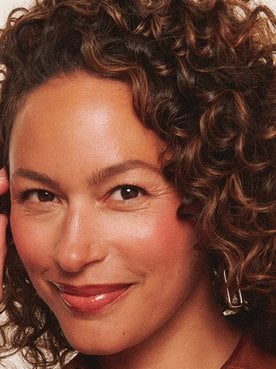Watching clumps of hair circling your shower drain is enough to send anyone into a tailspin. Before you panic, it’s important to know that a certain amount of hair loss is completely natural, and it happens to everyone. Of course, that begs the question: How much hair loss is normal—and when is shedding cause for concern?
Here, we’ll explain what normal hair loss may look like and explain some of the factors that can contribute to increased hair loss. We’ll also offer some tips on how to care for your strands and keep the unnecessary shedding to a minimum. Find all the details below.
Hair Shedding vs. Hair Loss: What Is Normal?
According to the American Academy of Dermatology (AAD), the average person loses between 50 and 100 strands per day (the exact number can depend on the length, thickness, and condition of your hair). While we may refer to this colloquially as “hair loss,” it’s actually hair shedding—and yes, it’s completely normal. According to the National Center for Biotechnology Information (NCBI), hair grows in phases. Active growth is the anagen phase, and it’s followed by the catagen phase, in which growth slows. The final stage is called the telogen phase. During this period, growth stops and the hair lies dormant until it naturally sheds (to be replaced by new strands further down the line).
In contrast, hair loss refers specifically to the inability to grow hair back after it sheds. So while normal hair shedding isn’t generally cause for concern, you may want to call your doctor if your strands are falling out and leaving bald spots in their wake.
4 Common Causes of Hair Shedding
While it’s totally normal to lose up to 100 strands of hair per day, there are some factors that may make you lose more (or make it appear as if you’re losing more). These include:
Showering
We love a long shower, but it's also where we see the most hair fall. Fortunately, according to the Cleveland Clinic, most of the shedding you see in the shower isn’t true hair loss, but the strands your follicles naturally shed daily (you’re just more likely to notice it when you’re knuckle-deep in your mane). Your hair type also plays a role when it comes to how much hair is normal to lose in the shower. Those with thinner strands tend to see less shedding than those with thicker strands who shampoo once or twice per week.
Keep in mind that while shampooing alone shouldn’t cause hair loss, your showering habits can take a toll on the health of your hair. Hot showers may feel relaxing, but those high temperatures can strip the moisture from your skin and hair, leading to dryness. The resulting dryness can make your strands more susceptible to hair damage, brittleness, and potentially even breakage. While breakage isn’t hair loss in the traditional sense, experiencing lots of it can make your strands look thinner—so it’s probably best to stick with warm (not boiling) showers.
Having a baby
During pregnancy, you may notice that your hair looks thicker and fuller than usual—that's no coincidence. According to the American Pregnancy Association (APA), the rise in hormones that occurs during pregnancy may reduce hair loss and shedding. Sadly, the effects are temporary: After you give birth and your hormone levels return to normal, your hair will resume its normal hair growth cycle. As this happens, you may experience an influx of shedding that your body staves off during the nine months of pregnancy. While alarming, postpartum shedding is considered normal, and you can expect your hair to return to its pre-pregnancy state within a year. If you’re losing fistfuls of hair or it’s not growing back, however, you may want to give your doctor a ring.
Aging
This one probably isn’t much of a surprise. As you age, the rate of hair growth slows, per the AAD. At the same time, hair may lose its color (in other words, turn gray) and become finer and less dense. All of this is a part of the natural aging process, though if you’re concerned about it, a doctor may be able to offer advice on how to stimulate hair growth.
Hair care and styling
How you care for your hair daily, the products you use, and the chemical services you opt for can significantly affect your hair's health. A solid and consistent hair care routine with products catering to your hair type and concerns can go a long way in reducing unnecessary hair loss.
Whether crafting an elaborate updo or detangling your strands for a simple ponytail, you can expect to lose a few strands any time you manipulate your mane. While a few fallen strands are not a cause for concern, you can reduce the amount of hair fall by treating your hair gently and detangling it with care.
How To Reduce Hair Shedding: 8 Tips to Try
Now you know how much hair shedding is normal. But if you’re looking for ways to reduce shedding, read on—we’re sharing some of our top tips for a healthy scalp and strands below.
1. Upgrade your products
The hair products you choose can greatly affect how your hair looks, feels, and behaves. If you’re looking to reduce hair fall, seek out products with rosemary oil—research suggests products with this ingredient may help reduce some types of hair loss. Try L’Oréal Paris EverPure EverStrong Sulfate-Free Thickening Shampoo and L’Oréal Paris EverPure EverStrong Sulfate-Free Thickening Conditioner. The rosemary-infused duo helps fortify fragile, thin hair to help reduce breakage and promote thicker-looking strands.
Beyond shampoo and conditioner, we also recommend adding a rosemary oil-infused hair oil to your routine. We love the L’Oréal Paris EverPure Sulfate-Free Simply Clean Sheer Oil, which contains a natural origin blend of sunflower, olive, jojoba seed, coconut, and rosemary oils.
Shop the Products
2. Detangle with a wide-tooth comb
Tugging at tangles with a brush can put unnecessary friction on your hair and cause breakage, which may make it look as if you’re experiencing hair loss. To avoid this common mishap, detangle your hair with a wide-tooth comb when it’s damp, working your way from the ends up.
3. Avoid tight hairstyles
You may love how that slicked-back ponytail looks, but be sure not to wear your hair in this style every day. According to the AAD, frequently wearing your hair in tight hairstyles can lead to hair loss. Wear your hair down when you can, and opt for looser updos when you want to get your hair off of your face.
4. Limit heat styling
According to the Cleveland Clinic, regular heat styling can damage your hair and cause breakage (which often looks a lot like hair loss). So, as much as you may want to blow dry or flat iron your hair, it’s wise to cut back when possible. Instead, opt for heatless styling alternatives and be sure to use a heat protectant, like the L’Oréal Paris EverPure Sulfate-Free Weightless Blow Dry Primer, Heat Protectant, when you do reach for the hot tools.
Shop the Products
5. Shield your hair from the sun
You know that protecting your skin from the sun is a must, but don’t neglect your strands. As the Cleveland Clinic notes, sun exposure can damage your hair and lead to shedding, just as using hot tools frequently can take a toll on your strands. Play it safe and take the proper sun care precautions for your mane, such as wearing a hat, using a heat protectant, and staying in the shade when possible.
6. Treat your scalp
If you’re experiencing more shedding than normal, you may want to turn your attention to your scalp. Buildup, irritation, and dryness can all throw your scalp off balance, which can in turn impact the look and feel of your mane. Consider adding a scalp treatment, such as L’Oréal Paris Elvive Hyaluron + Pure Oil Erasing Serum for Oily Hair, into your regular routine. The salicylic acid-infused formula helps remove impurities, leaving the scalp feeling purified and refreshed.
Shop the Products
7. Head to the salon
The best part about building a relationship with your hairstylist is that they can usually notice a change in your strands before you do. During your appointment, your stylist will be able to examine your hair to see how it’s changed since your last cut, recommend products and haircare techniques for your hair type and concerns, and offer salon-exclusive hair treatments to help improve the look and feel of your hair.
8. Schedule an appointment with a dermatologist
If you’ve followed the above tips but haven’t noticed an improvement in your hair loss within a few months, we suggest scheduling an appointment with a dermatologist. An expert can help identify the cause of your hair loss and offer recommendations on how to address it.
How Do You Know if Your Hair Loss Is Excessive?
While a certain amount of hair loss is considered normal, there’s a fine line between normal shedding and excessive hair loss. As we mentioned earlier, losing more than 100 hairs per day could be an indication that something is up. Of course, you probably aren’t counting each strand that falls from your mane.
As such, the best way to differentiate between normal shedding vs. hair loss is to keep a close eye on how your hair looks and feels. If you consistently lose the same amount of hair on wash day and your mane still looks and feels full and healthy, consider that your baseline. A sudden uptick in shedding, on the other hand, may indicate excessive hair loss.
While some causes of hair loss are temporary and will correct themselves with time (or after a few tweaks to your routine), others prevent your follicles from growing hair. When in doubt, a dermatologist can help differentiate between normal and excessive hair loss and determine your best course of action.
6 Common Causes of Excessive Hair Loss
Hair loss may sound scary, but typically, identifying (and addressing) the underlying cause of the problem can help. With that said, here are a few factors that can contribute to increased hair loss:
Diet
If you’re seeing more hair loss in the shower than usual, your diet may be to blame. Your hair needs certain nutrients to grow properly, and without these nutrients, your strands may shed more than they otherwise would.
Stress
You may experience an increase in hair loss when you’re feeling stressed. According to the Cleveland Clinic, emotional and physical stress can cause your hair to prematurely enter the telogen (i.e., shedding) phase, resulting in higher-than-normal hair loss. Fortunately, it’s not permanent—you just have to address the underlying cause, and your hair should begin growing back normally.
Certain medical conditions
Finally, some medical conditions can cause or exacerbate hair loss, including thyroid disease, psoriasis, and alopecia areata. If you find yourself losing lots of hair, visit your doctor. They can help determine the cause and develop a plan to help manage it.
Next Up: 10 Ways to Protect Your Hair While You Sleep
Photo Courtesy of L'Oréal Paris
